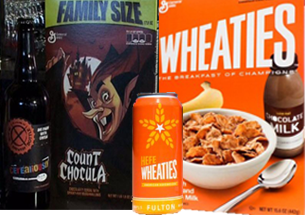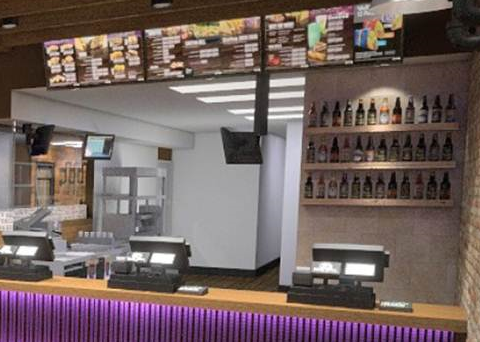In the Doghouse
Search
In the Doghouse
Doghouse: Four Loko Gold
September 24, 2015

At 14% ABV and 23.5 oz., Four Loko Gold contains 5.5 standard drinks in one single-serve container, the highest alcohol content of all Four Loko products.
Initially released in just a limited number of states, young drinkers flocked to social media sites in attempt to locate retailers selling the new product. In the meantime, Four Loko sponsored parties and contests for users to find out where the elusive Gold was served. To gain access to the location of the parties, users had to RSVP through social media channels.
Currently Phusion Projects is sponsoring Four Loko Lokoween 2015, a contest where users can enter via text message or Facebook app for a chance to win a three-day trip to the Voodoo music festival New Orleans over Halloween weekend.
Doghouse: General Mills pairs kid cereals with beer
September 4, 2015

GM recently shipped boxes of its Count Chocula cereal directly to the Black Rock Brewery in Fort Collins, Colorado, to produce the brewer's Halloween-edition Cerealiously Count Chocula beer.
This summer GM also announced a partnership with Minneapolis’ Fulton Beer to create yet another cereal-inspired brew. HefeWheaties is not made with the actual Wheaties cereal, but is available in 16-ounce cans that mimic a Wheaties box.
According to the Beer Institute and its industry self-regulatory code, beer advertising and marketing materials are supposed to avoid elements that appeal to youth. The code lists elements that primarily appeal to children, including but not limited to cartoon characters (Count Chocula) and symbols (Wheaties brand mark), for example.
Perhaps GM is used to advertising cereals like Cheerios, Lucky Charms, and Trix (are for kids!) to children that it hasn't occurred to GM execs or its marketing staff that alcohol is a different kind of product.
Adding cereal as ingredient to beer and using it to promote is a recipe for attracting more kids to alcohol - and as a result, increasing harm.
Taco Bell Moves to Rebrand with...Alcoholic Slushies
August 12, 2015

A subsidiary of YUM Brands along with Kentucky Fried Chicken and Pizza Hut, Taco Bell explicitly promotes itself to youth, college students, and Millennials (the youngest of whom start at age 18). Chicago neighbors have expressed concerns that include increased underage access and open containers resulting from this alcohol-soaked brand expansion. In response, the company agreed to hire a security guard on weekend nights – basically a slap in the face of valid concerns of expanded alcohol outlet density and the alcohol-related harm that follows.
Residents are rightfully concerned about alcohol on the menu of a franchise with low prices, long hours, and high underage foot traffic, and do not want the resulting consequences of this potential influx of alcohol to affect their neighborhood. San Francisco residents have been outspoken as well, with 200 residents signing a petition against the new Taco Bell, and more than 240 residents sending official protest forms to the California Department of Alcoholic Beverage Control (ABC).
Taco Bell aims to rebrand itself as unique, authentic, healthier, and more upscale. College age and young adult customers prefer places that are less cookie cutter and more authentic. The addition of alcohol to the Taco Bell menu increases the chain’s level of perceived authenticity, just as the lower-calorie menu items encourage the false perception of Taco Bell as a healthy choice. But adding alcoholic beverages to the menu cancels out any improvement from a few different (and unpopular) food choices. (By the way, Taco Bell: alcohol has calories and no nutrients, too.)
Taco Bell hopes its alcohol marketing ploy will bring in significant revenue, and additional fast food brands will come on board to do the same. The outcome? A steep and dangerous increase in alcohol outlet density and alcohol-related harm - and a disturbing public health problem. Adding alcohol to the menu of a fast food giant directly counters the US Community Preventive Services Task Force recommendations to prevent excess alcohol consumption and harm to individuals and communities.
With more than 5,800 locations in the US, and a brand known for the ease with which someone can swing by to pick up an inexpensive taco or twelve, Taco Bell adding alcohol to its menu will spell success for attracting the youth demographic, and disaster for public health.
More Articles ...
Help us hold Big Alcohol accountable for the harm its products cause.
| GET ACTION ALERTS AND eNEWS |
STAY CONNECTED    |
CONTACT US 24 Belvedere St. San Rafael, CA 94901 415-456-5692 |
SUPPORT US Terms of Service & Privacy Policy |
Copyright © 2025 Alcohol Justice. All Rights Reserved.
Joomla! is Free Software released under the GNU General Public License.


